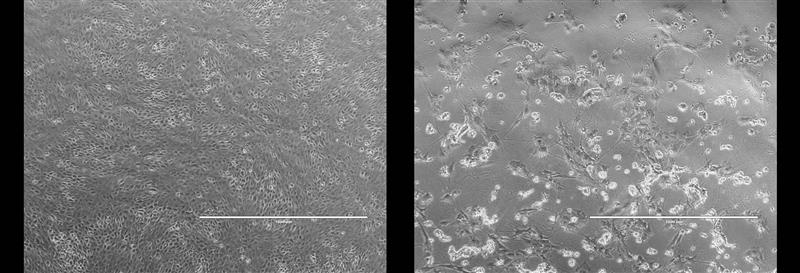Media release
From:
Scientists at CSIRO, Australia’s national science agency, have identified a new virus in Australian flying foxes, a discovery which strengthens Australia’s preparedness against emerging infectious diseases.
Named Salt Gully virus, the novel henipavirus was discovered in bat urine samples collected in Queensland.
CSIRO researchers were able to isolate and grow Salt Gully virus in CSIRO’s Australian Centre for Disease Preparedness (ACDP) high containment laboratory.
Salt Gully virus belongs to the same virus family as Hendra virus, which has caused fatal infections in horses and humans in Australia, and Nipah virus, known for causing outbreaks in humans across Asia.
Jennifer Barr, experimental scientist at CSIRO’s ACDP, said henipaviruses are recognised by the World Health Organization as priority pathogens for research, and the discovery increases knowledge of this important virus group.
“Although Salt Gully virus is new to science, there’s no cause for public alarm,” Mrs Barr said.
“We’ve detected Salt Gully virus in bat samples dating back to 2011, which shows it’s been circulating in nature for over a decade without any evidence of it causing illness in animals or humans,” Mrs Barr said.
This discovery provides a foundation for further research into how the virus compares with Hendra and Nipah, including its potential to cause disease.
“Early findings show Salt Gully virus does not rely on the same cell receptors as Hendra or Nipah viruses, suggesting that the infection process will be different. As a result, we can’t predict whether it will result in future disease outbreaks in humans or animals,” Mrs Barr said.
By understanding these viruses, researchers can better prepare for potential outbreaks.
“Now that we’ve identified the virus, diagnostic tests can be developed. This means if a spillover from bats and disease outbreak were to occur, we’d have the tools to detect this virus earlier – enabling timely measures to prevent further spread," Mrs Barr explained.
The existing Hendra vaccine for horses remains effective against Hendra virus disease, and Salt Gully virus does not compromise this protection. Its discovery does not change the current health risk posed by bats.
ACDP is a vital part of Australia’s preparedness for disease outbreaks. Its microbiologically and physically secure facilities allow teams to work safely with animal and zoonotic diseases while keeping them securely contained.
The research, published in the September issue of Emerging Infectious Diseases, marks a significant step forward in understanding viruses that originate in wildlife and could pose a risk to livestock and human health.



 Australia; VIC
Australia; VIC



